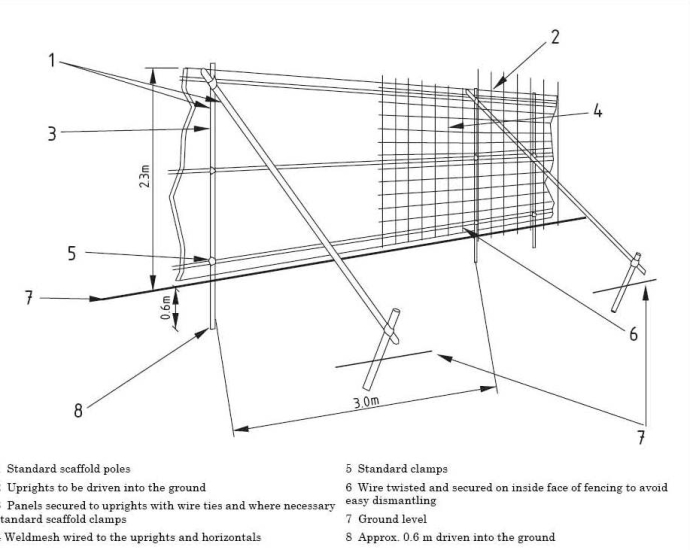In addition to a Tree Protection Plan, some local authorities require a written report on tree protection
Once proposals have been finalised, the local authority may require an approved Arboricultural Method Statement in order to ensure that trees are not damaged during construction. Issues addressed range from Storage of materials and siting of cabins to Sympathetic road construction techniques. Adherence to the approved Arboricultural Method Statement may be a condition of Planning Consent.
The Local Authority have the power of enforcement via fines and cessation of works. It is essential that a realistic and viable Arboricultural Method Statement is produced at the outset which balances the practical requirements of developers with those of the Local Authority. Having considerable experience of the construction industry, Crown Consultants are able to achieve this objective and help to avoid expensive fines and delays.
WHAT IS A TREE PRESERVATION ORDER (TPO)?
Tree Preservation Orders are designed to protect trees with amenity value, i.e. they can be seen from public areas as an aesthetic feature.
It is illegal to lop, top, uproot or otherwise wilfully damage a tree which is covered by a TPO. (This includes pruning)
Tree Preservation Orders are served on:
Individual trees
Groups of trees
Tree Protection Plan to BS5837:2012
Woodlands (includes all the new saplings on the woodland floor)
Areas of trees (includes all trees present at the time of serving the TPO but none that have germinated since)
If you do wish to fell or carry out any pruning works to such a tree, you need ‘planning consent’ from the Local Planning Authority.
I NEED TO DO TREEWORK TO A TPO TREE
You need to apply for Consent. Complete and submit the appropriate planning application form(no fee for this type of application) to the Local Planning Authority, who will decide whether to Refuse or Grant consent. Consent may be granted with conditions e.g. time limits, and need for replacement planting if the proposals include felling.
I NEED TO DO TREEWORK IN A CONSERVATION AREA
If the tree has stem diameter of 75mm or more (smaller trees are not protected unless specifically covered by a TPO) you should give the Local Planning Authority 6 weeks’ written notice of your treework proposals. The Local Planning Authority may respond in one of 4 ways:
no objections
request a modification to your proposal to which they would have no objections
if they are against your proposals they have the 6 week period in which to serve a TPO on the tree/s, and thereby control what work may or may not be carried out.
no reply at all within the 6 week notice period – it is accepted that they have no objection to the proposed works.
It should be noted that if the Local Planning Authority have no objection to the proposed works, it is not the same as ‘giving permission’. The person carrying out the tree work should ensure they have the owner’s permission and also are complying with other legislation eg not disturbing nesting birds or bat roosts or foraging habitat.
Weddles can help: Sometimes an arboriculturalist report can assist treework notifications or advise on best approach.
DO I NEED TO OWN THE TREE TO APPLY ?
No, but the owner should be informed and have no objections, otherwise you would potentially be damaging someone else’s property and all that that entails.
Weddles can help: Sometimes an arboriculturalist report can assist treework applications. For example, if the TPO was served many years ago, the tree may not be worthy of protection for example, it may have become diseased, or hazardous.
DO YOU NEED TO SURVEY TREES OUTSIDE OF MY DEVELOPMENT SITE?
If there are any trees on a potential development, or growing on adjacent land at or within 12 times their stem diameter (maximum 15m) outside the boundary, a tree survey toBS5837: 2012 Trees in relation to construction should accompany the planning application. Other application drawings should clearly indicate which trees are proposed for removal and which are to be retained and protected.
WHAT DO THE TREE CLASSIFICATIONS MEAN?
The survey catalogues the tree size, species, position and categorises trees into grades A, B, C and U.
A should be retained – good form, healthy, , life expectancy 40+ yrs
B worthy of retention – reasonably good form, healthy, life expectancy 40+ yrs
C can retain – young or not particularly good form
U remove – dead, dying or hazardous
WHAT IS THE ROOT PROTECTION AREA (RPA)
The RPA is calculated from survey measurements and can be plotted on plan. It defines the area of the root plate of the tree which should not be disturbed. The ground level remains the same. Within the RPA, there should be no excavations below, and no materials stored above.
The survey, and RPAs should inform development proposals.
ANY OTHER RESTRICTIONS TO TREEWORK?
It is illegal to disturb nesting birds and bat roosts and bats’ foraging habitat.
Weddles can help: Weddles have more than 30 years’ experience on providing arboricultural advice and preparing drawings to accompany Planning Application. Whatever the issue, Weddles can offer timely, cost-effective and practical advice.


